Moving Average Forex Strategy
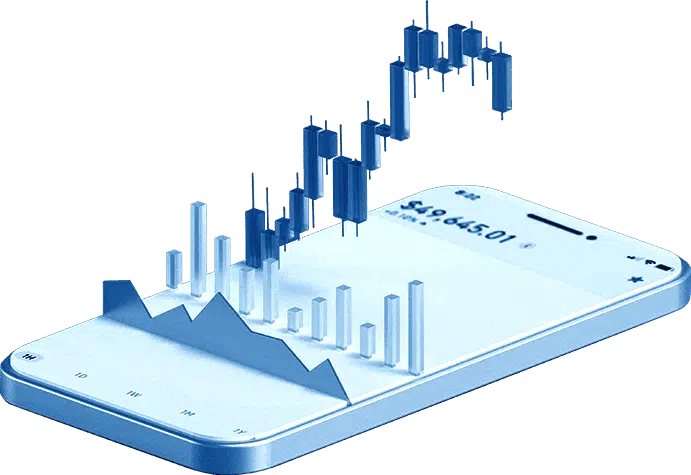
Moving Average Indicator
Determining the Forex market trend is very important for successful trading. Indicators help traders determine the price direction of the market. One of the most commonly used indicators available on Metatrader 4 and Metatrader 5 is the Moving Average.
- Indicators and Their Purposes
- Moving Average
- Types of Moving Averages
- Trading with Moving Average
- Trading with one MA
- Trading with two MAs
- Trading with several indicators
Moving Average – Definition
This indicator helps determine the trend direction, its possible reversals, as well as a flat market (when the price is neither rising nor declining).
How is that achieved?
Moving Average (MA) is a line that follows the trend, giving you an idea of which way the market is moving. The Moving Average is a lagging indicator meaning it follows the trend. It is often used in conjunction with other indicators to give you an indicator or when to trade or when a trend is about to reverse. In the examples below, you will find helpful information about how this indicator determines the trend:
Determining uptrend with МА
Chart designations:
- Uptrend
- Maximums are constantly renewed
- SMA (red) reflects asset growth
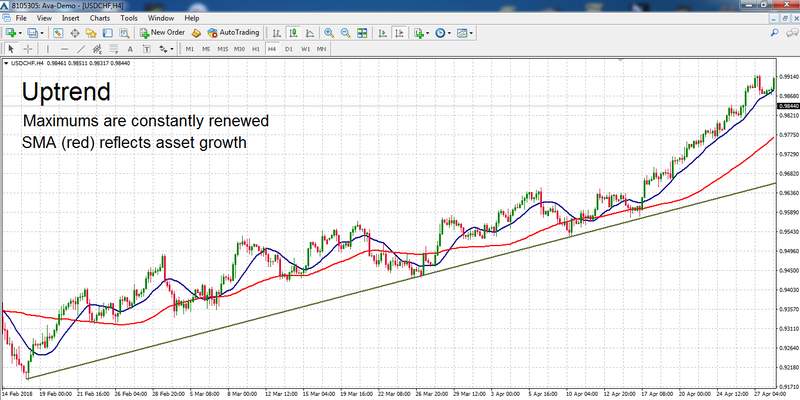
The first example demonstrates how the rising asset formed an uptrend and the Moving Average confirms it. A downtrend is shown in the next chart.
Determining downtrend with МА
Chart designations:
- Downtrend
- Minimums are renewed
- SMA (red) reflects asset decline
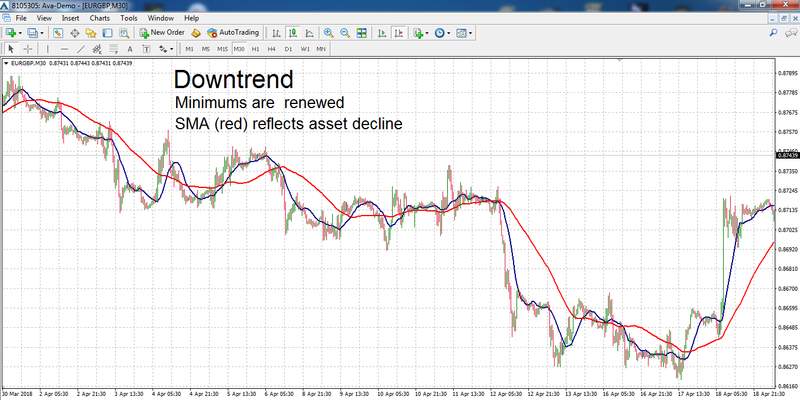
Moving Average: Indicator Characteristics
At each point, the MA value is an average price indicator over a certain period of time.
Sometimes it is an arithmetic mean, other times more complex formulas are employed.
The indicator works with periods of time, and this is the main parameter you will implement when setting this indicator up.
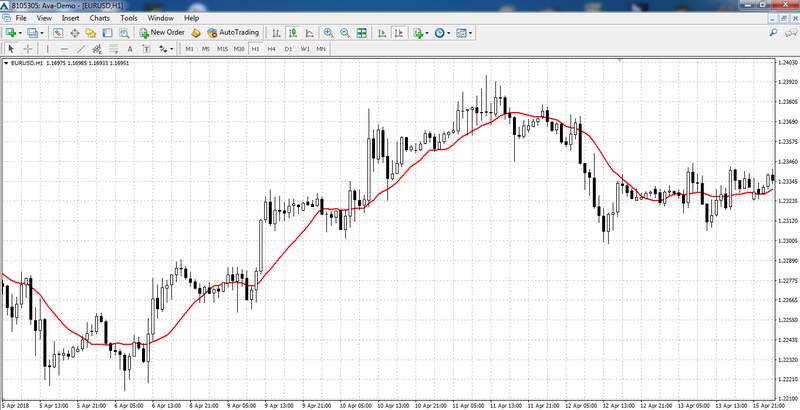
There four basic MA types:
- Simple MA – Its values are simple arithmetic means of the price changes.
- Exponential MA – Here more weight is given to the latest data. The weight is calculated in arithmetic series.
- Linearly weighted MA -More weight is given to the latest data, however, the weight is calculated exponentially.
- Smoothed MA – More weight is given to the latest data, it takes into account the price values beyond the time period (their influence is not significant).
It is quite easy to add this indicator in the MetaTrader 4 chart. You can do that by selecting “Indicators” – ”Trend” – ”Moving Average” in the “Insert” tab of the upper menu or just by clicking on the relevant icon on the toolbar.
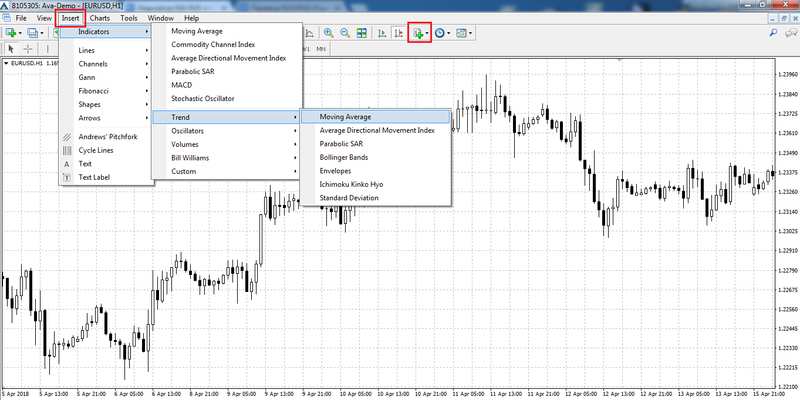
To set the indicator, right-click on the indicator and choose Parameters.
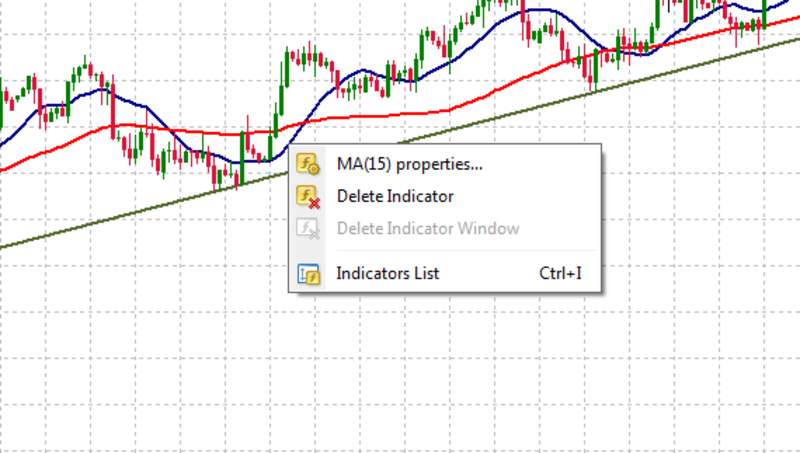
You will see a window, where you can set the following parameters:
- Period
- Shift
- МА method ( МА type, e.g. Simple or Smoothed)
- Apply to (calculate based on the opening/closing price, etc.)
- МА style (color, thickness)
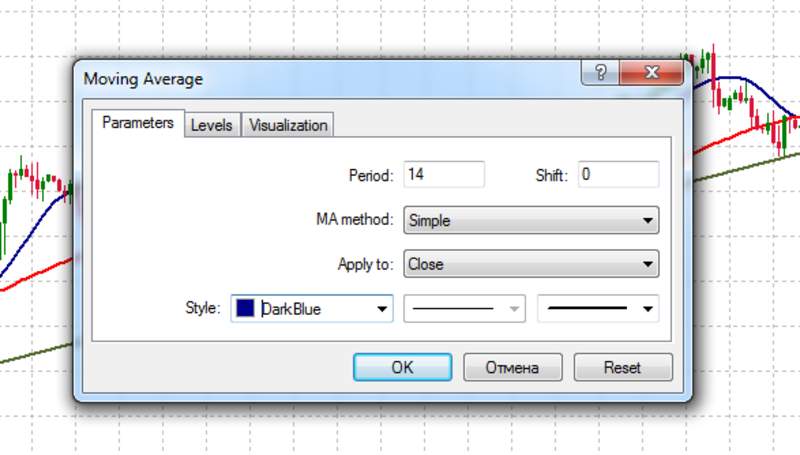
You can also choose the timeframes in the Parameters window. For example, if your trading strategy envisages only 14 МА on the H4 and H1 charts, you need to specify it in the settings:
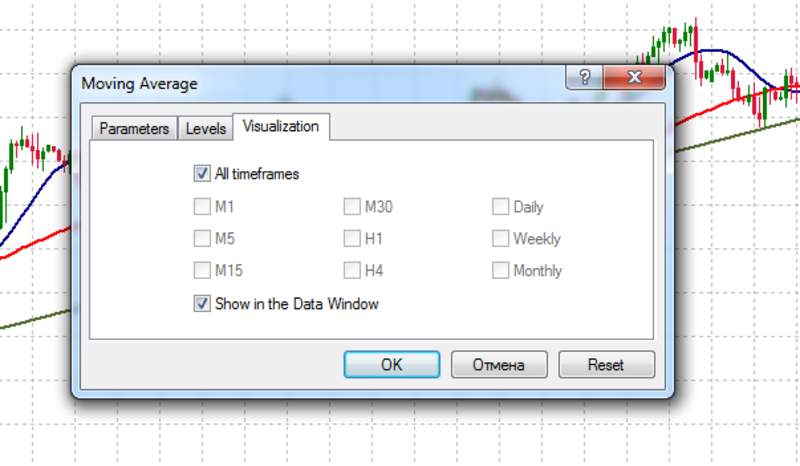
The majority of strategies use Simple Moving Average. As a rule, it is set to default unless otherwise required by the trading system.
Moving Average Types
Simple moving average (SMA)
A Simple Moving Average (SMA) is a line on a price chart, calculated by averaging the closing prices over a specific period. The longer the period, the smoother and further the SMA is from the actual price chart.
Example: if the last 5 days’ closing prices were 1.2, 1.3, 1.2, 1.5, and 1.6, the 5-day SMA would be 1.36. To calculate the next SMA value, drop the first price (1.2) and add the latest closing price to the calculation.
To add an SMA to your chart, select “Moving Average” from your trading platform’s indicators, choose “Simple” as the method, and adjust the settings according to your trading strategy.
The SMA is one of the most widely used moving averages and forms the foundation of many trading strategies. While traders often combine SMA with other indicators, some strategies use SMA alone, such as the “Sweet Chariot” strategy.
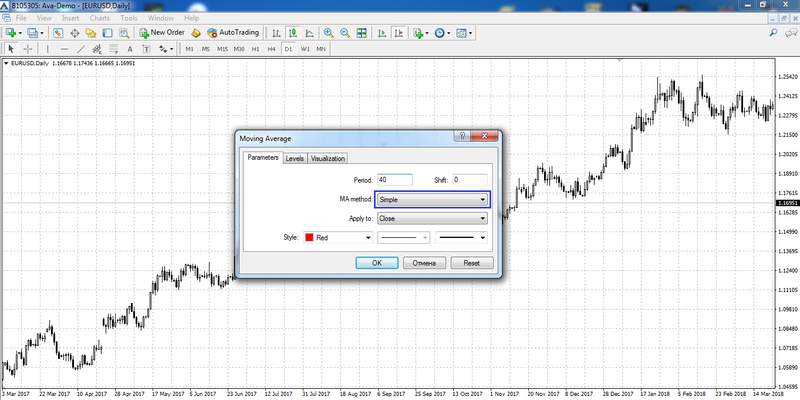
The Sweet Chariot Strategy (Using SMA)
This strategy is ideal for medium- and short-term trading. It works best on daily (D1) or weekly (W1) charts. It can also be applied to shorter timeframes like 1-hour or 4-hour charts, but larger timeframes provide more reliable signals.
Key Rules:
- Buy Signal – When the price crosses the 40-period SMA upward, and the candle closes above the SMA. Buy at the start of the next candle.
- Sell Signal: When the price crosses the 40-period SMA downward, and the candle closes below the SMA. Sell at the start of the next candle.
Risk Management:
- Stop Loss – Set a stop loss just below the lowest point of the candle (for a buy) or above the highest point (for a sell).
- Take Profit – Lock profits using a take profit e.g. at three times the stop loss distance, or set a trailing stop.
While the traditional Sweet Chariot strategy doesn’t include extra tools, some traders add indicators like the ADX to reduce the risk of entering sideways (flat) markets. This strategy works best when a market is trending.
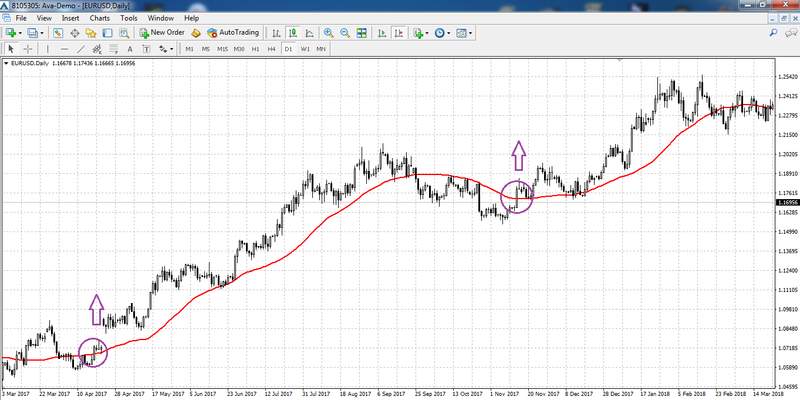
Exponential Moving Average
An Exponential Moving Average (EMA) is similar to a Simple Moving Average (SMA) but gives more importance to recent price data. This makes the EMA more responsive to current market movements.
Example: In a 10-period EMA, the most recent prices carry the most weight, while older prices (like the 10th candle in reverse order) have little impact.
Unlike the SMA, the EMA’s formula reduces the effect of older, less relevant data. This creates a line that is closer to the price chart and less influenced by outdated values.
You can add EMA to your chart just like SMA, but when selecting the method, choose “Exponential” in your platform’s indicator settings.
Many Forex strategies that use SMA can also use EMA. In fact, many professional traders often tweak strategies by replacing SMA with EMA and testing the results. EMAs are more suitable for short-term strategies that lay more emphasis on recent prices, whereas SMAs are ideal for long-term trading strategies.
One example is the EMA + Awesome Oscillator strategy, which combines a trend indicator (EMA) with an oscillator (Awesome Oscillator, or AO) to pinpoint optimal market entry points.
This strategy works on any timeframe but is especially useful for short-term trading (M15 to H1 charts).
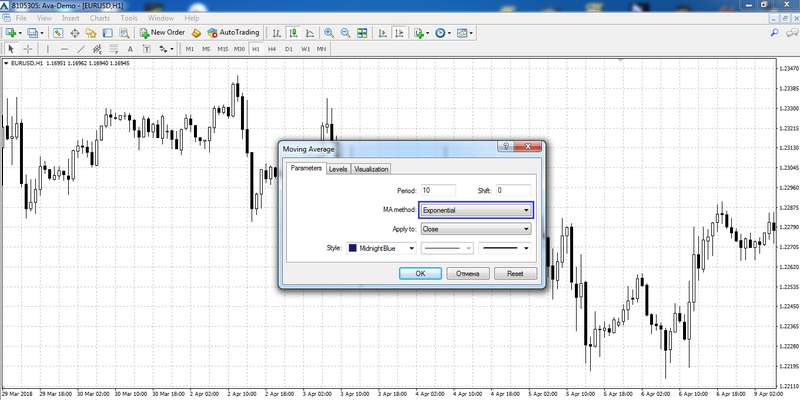
EMA + Awesome Oscillator Strategy
Key Rules:
- Buy Signal (Long Position):
- The price crosses the EMA upward.
- The Awesome Oscillator (AO) histogram crosses above the zero line.
- Sell Signal (Short Position):
- The price crosses the EMA downward.
- The AO histogram crosses below the zero line.
Risk Management:
- There are no strict rules for exiting. You can:
- Close the position when an opposite signal appears.
- Use stop loss and take profit. A risk/reward ratio of at least 1:3 is recommended.

Linearly weighted moving average
The Linearly Weighted Moving Average (WMA) is another type of moving average that, like the Exponential Moving Average (EMA), gives more importance to recent price data. However, WMA uses a geometric progression in its weighting system.
Example: In a 5-period WMA, the latest price gets a weight of 5, the second-most recent gets 4, and so on until the oldest value gets a weight of 1. This method makes the WMA highly responsive to recent price changes.
You can add a WMA to your chart just like SMA and EMA but select “Linear Weighted” as the MA method in your platform’s settings.
While WMA is less commonly used than SMA or EMA, it is a key component of some advanced trading strategies.
One example is a strategy that combines WMA with the RSI (Relative Strength Index) and MACD (Moving Average Convergence Divergence) indicators. This strategy is ideal for medium-term trading on daily charts, particularly with the EUR/USD pair.

WMA + RSI + MACD Strategy
Indicators Needed:
- Five WMAs with periods of 5, 15, 30, 60, and 90.
- RSI oscillator with a period of 5, using levels of 40 and 60.
- MACD with slow and fast EMAs set to 13 and 5, and SMA as the default.
Key Rules:
- Sell Signal (Short Position):
- The 5-period WMA crosses below the 15-period WMA, and both are below the remaining WMAs.
- RSI line is above 60 (overbought) and crosses back below 60.
- MACD histogram rises above 0.005 and then reverses downward.
- Buy Signal (Long Position):
- The 5-period WMA crosses above the 15-period WMA, and both are above the remaining WMAs.
- RSI line is below 40 (oversold) and crosses above 400.
- MACD histogram falls below 0.005 and then reverses upward.
Risk Management:
- Exit rules are flexible but stop loss is mandatory.
Place the stop loss at the candle’s recent high/low or the nearest support/resistance level.
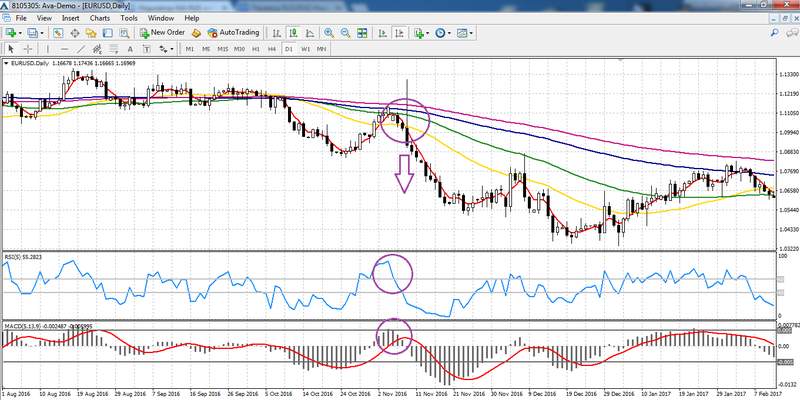
Smoothed Moving Average
The Smoothed Moving Average (SMMA) differs from other moving averages by including both recent price data and historical price data in its calculation. While recent data has more weight, historical data still influences the results. This makes the SMMA less responsive to current price changes and positions it further from the price chart compared to the SMA, EMA, or WMA within the same period.
The SMMA calculation considers a broad range of data points and is designed to ‘smooth’ out recent price fluctuations and unimportant spikes/dips. The result is a clear line that is less volatile and provides a big picture of the long-term trend. It is therefore suitable for long-term trading strategies.
You can add an SMMA to your chart like any other moving average. Select the period, shift, and style, then choose “Smoothed” as the MA method in your platform’s settings.
The SMMA is the least commonly used type of moving average. It is rarely applied in manual trading strategies but is occasionally used in advanced automated systems or custom indicators.
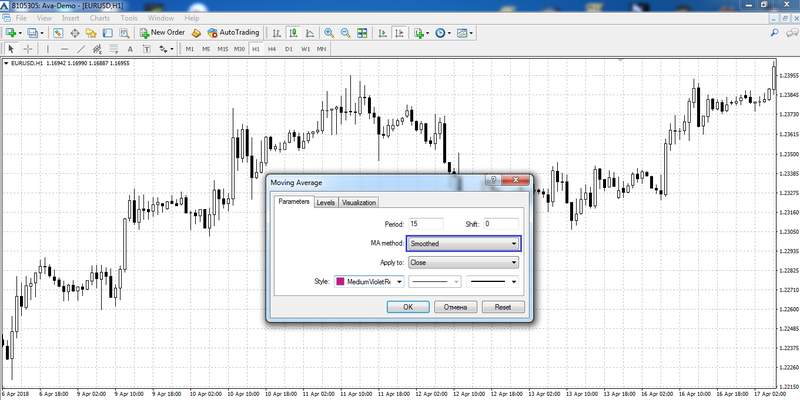
Trading with moving averages
Moving Average is a universal tool. It is suitable for any timeframes and assets. There are plenty of different trading strategies and approaches that use moving averages. Below are the most basic ones.
Trading with one MA
This is the most basic and universal approach. Since only one indicator is needed for the analysis, the position should be open when the price crosses the MA:
- If the price crosses MA upwards, a long position opens.
- If the price crosses MA downwards, it’s best to sell.
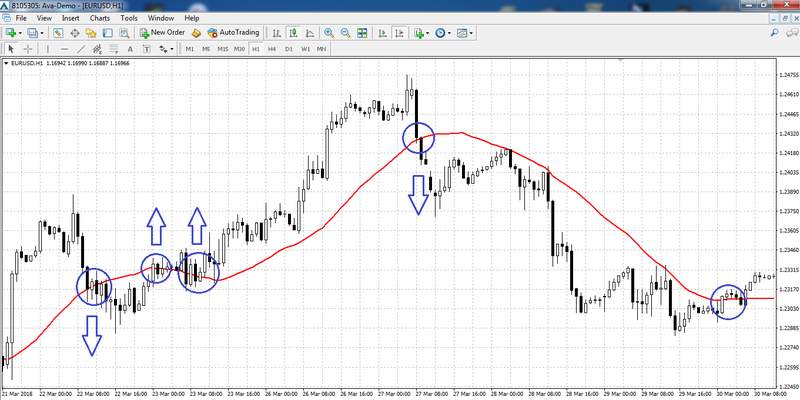
One of the strategy’s shortcomings is that there are many false signals. One MA can help catch a major trend, but before that, you might have to open several losing positions. That is why you have to set a stop loss for each position and allow the profit to grow, thus compensating for the previous losses.
Trading with two moving averages
This approach is similar to the previous one, but here the chart has two MAs with different time parameters. The signal will be the intersection of the two MAs:
- If the fast MA crosses the slow one upwards, a long position is open.
- Conversely, it’s best to sell.
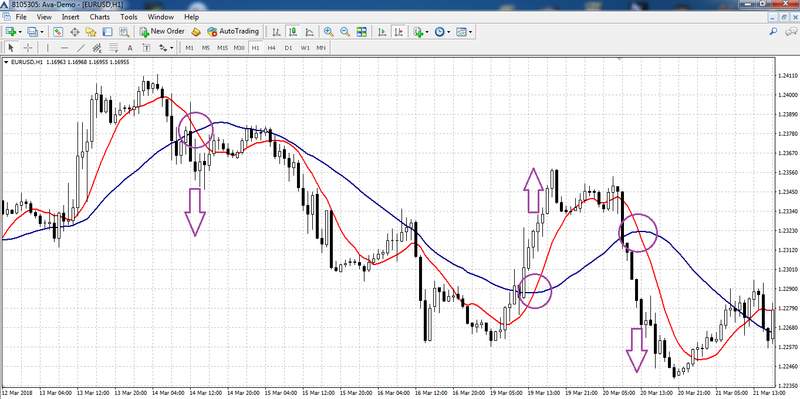
As becomes clear from the example, the second MA allows you to filter out many false signals. Then again, there is another problem, which is connected with lagging. It often happens that the two MAs intersect only when half of the trend is already behind.
Moving Average + MACD
MACD is an oscillator that uses the data on two MAs and their interactions. Together with MA, it acts as a filter.
The MA+MACD strategy algorithm is as follows:
- It is recommended to go long when the price crosses MA upwards and the MACD bars cross the line upwards as well.
- It is best to go short when the price crosses MA downwards, and the MACD bars move in the same direction.

If the signal of one of the indicators is lagging and they are not synchronised, it’s best not to open a position.
Key takeaways for trading with Moving Averages
- Trend Identification – Experts agree that moving averages are effective for determining the overall trend of a market by smoothing out short-term volatility.
- Support and Resistance – They can act as dynamic support or resistance levels, providing clues about where the price might find difficulty moving higher or lower.
- Signal Generation – Crossovers between different moving averages, e.g. 50-day and 200-day can generate buy or sell signals, indicating potential shifts in market direction.
- Lagging Indicator – While helpful, moving averages are based on past prices and may lag current market conditions. Experts suggest using them alongside leading indicators for more potent signals.
- Combination with Other Tools – Most professionals recommend combining moving averages with other forms of analysis, such as volume data, oscillators or fundamental analysis, for a more comprehensive trading strategy.
Remember, while moving averages are valuable, they are most effective when integrated into a well-rounded trading plan that considers multiple factors.
Main Moving Average Forex Strategy FAQ
- What are the best moving averages to use for forex?
Because moving averages are the most commonly used indicator in forex trading it’s quite likely you will use moving averages at some time. But which are the best moving averages to use in forex trading? That depends on whether you have a short-term horizon or a long-term horizon. For short-term trades the 5, 10, and 20 period moving averages are best, while longer-term trading makes best use of the 50, 100, and 200 period moving averages.
- What are moving average trading strategies in forex?
Moving average crossover strategies have been found to be quite useful, but traders need to choose the proper moving averages for their trading strategy. A simple moving average typically lags price by too much to be useful in trading. Instead an exponential moving average should be used. Even better for moving average trading strategies is the use of the double exponential moving average (DEMA). Because the DEMA puts a far greater emphasis on the most recent prices its changes reflect price movements more rapidly. Many traders like to use a crossover strategy with DEMA tools, where a fast moving average such as the 10 period, crosses a slower moving average such as the 50 period.
- What is the best moving average crossover combination?
The best moving average crossover combination depends on the time horizon of the trader, as well as the market being traded. A short time horizon calls for a moving average crossover strategy that uses shorter moving averages, such as the 5 period and 20 period. A longer time horizon might see a trader using a crossover strategy that combines the 50 period and 200 period moving averages. Using both combinations together can yield the best strategy. The trader uses the long time horizon to determine the longer-term trend, and then only trades in that direction using signals generated by the shorter-term strategy.
Conclusion
Moving Average is a universal indicator that is used for chart analysis in all financial markets. The technical analysis specialists use moving averages to trade not only Forex trading pairs, they also use them with CFDs, commodities futures and even in bitcoin trading. Basic MA trading strategies will help you gain experience and master your skills. Apart from that, you will have to learn more about other indicators and try to use them to make your trading more effective. However, the only way to get truly substantial profits is to develop your own strategy based on your trading experience. The strategies described in this article are available on the AvaTrade’s trading platform.
You can test them without any risks as each new trader gets a free demo account that they can use for 21 days.
Trading in the financial markets is associated with high investment risks. To level them out, it is necessary to follow the money management rules and set your stop loss. Traders make all the decisions in the Forex market at their own risk. We recommend you visit our trading for beginners section for more articles on how to trade Forex and CFDs.


















